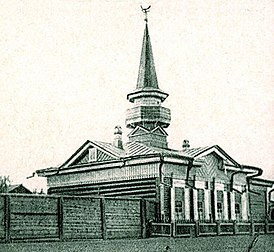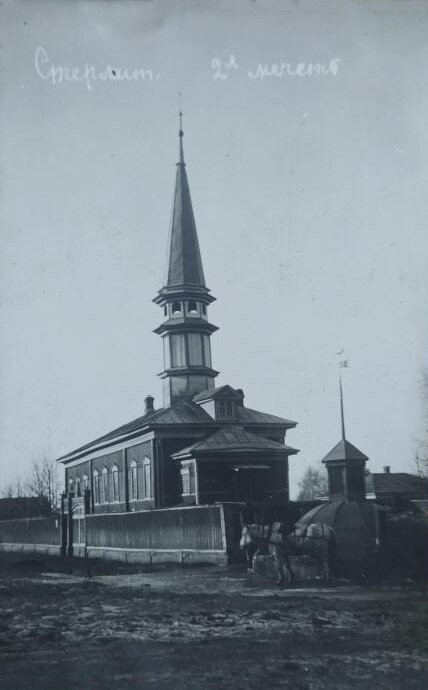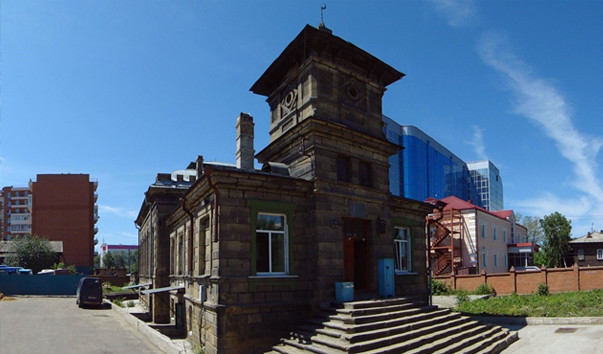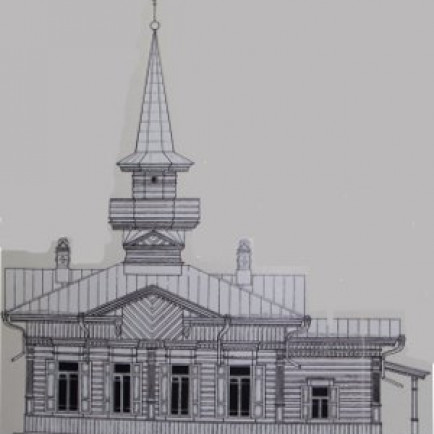Stone Mosque in Irkutsk
History
Mosque was built in 1904 at the expense of the Tomsk Muslim Society on the site of the first two wooden mosques that operated in the 19th century, which subsequently burned down. Until 1915, before the construction of the White Cathedral Mosque in Tomsk, up to 1,600 Muslims prayed in the Red Mosque. In the late 20s of the twentieth century, after the Bolshevik revolution, the mosque was closed, then converted into a cinema hall. From 1942 to 1985, it housed a distillery. Since 1986 - the shop of the food products plant "Tomsky". At this time, the building suffered the most significant damage: the minaret and dome were lost. In 2003, the mosque was returned to believers, and restoration work began. But at present, the functions of the mosque are performed by the renovated building of the madrasah, located nearby.
Restoration work here began in the fall of 2012, when it was possible to find a source of funding - the Regional Fund named after A.I. Akhmat Kadyrov.
The Irkutsk mosque has become a place of social and educational life for believers. A library and a school for Muslim children were formed here. There was a shelter for orphans and the disabled and a canteen for the poor. Mutual assistance was organized, provincial meetings and holidays were held.
Urban and Architectural
The first Irkutsk mosque was wooden. Its architecture is undoubtedly based on the traditions of urban wooden architecture of Irkutsk of the 19th century, which is distinguished by a high level of construction skills and artistic and decorative quality. The mosque was created from a typical one-story residential building, built earlier along the red line of the street. Its log walls were sheathed with rusticated boards, decorated with overlays on the theme of the order system and complemented with patterned carvings. Of particular interest was the minaret. Without a doubt, the minarets of the Tatar mosques of the Middle Volga region served as its prototype. Installed directly on the ridge of the roof, it ended with a pointed octagonal tent, setting a unique image.
Description
In the course of large-scale works, the mosque again acquired a 44-meter minaret and a dome more than 20 meters high.
References
http://www.islamsib.ru/siberian-mosques/294-irkutskaya-sobornaya-mechet
Details
Location
Ulitsa Karla Libknekhta, 86, Irkutsk, Irkutsk Oblast, russia، 664007
Worshippers
1600
Year of Build
1904
Drawings
Map
History
Mosque was built in 1904 at the expense of the Tomsk Muslim Society on the site of the first two wooden mosques that operated in the 19th century, which subsequently burned down. Until 1915, before the construction of the White Cathedral Mosque in Tomsk, up to 1,600 Muslims prayed in the Red Mosque. In the late 20s of the twentieth century, after the Bolshevik revolution, the mosque was closed, then converted into a cinema hall. From 1942 to 1985, it housed a distillery. Since 1986 - the shop of the food products plant "Tomsky". At this time, the building suffered the most significant damage: the minaret and dome were lost. In 2003, the mosque was returned to believers, and restoration work began. But at present, the functions of the mosque are performed by the renovated building of the madrasah, located nearby.
Restoration work here began in the fall of 2012, when it was possible to find a source of funding - the Regional Fund named after A.I. Akhmat Kadyrov.
The Irkutsk mosque has become a place of social and educational life for believers. A library and a school for Muslim children were formed here. There was a shelter for orphans and the disabled and a canteen for the poor. Mutual assistance was organized, provincial meetings and holidays were held.
Urban and Architectural
The first Irkutsk mosque was wooden. Its architecture is undoubtedly based on the traditions of urban wooden architecture of Irkutsk of the 19th century, which is distinguished by a high level of construction skills and artistic and decorative quality. The mosque was created from a typical one-story residential building, built earlier along the red line of the street. Its log walls were sheathed with rusticated boards, decorated with overlays on the theme of the order system and complemented with patterned carvings. Of particular interest was the minaret. Without a doubt, the minarets of the Tatar mosques of the Middle Volga region served as its prototype. Installed directly on the ridge of the roof, it ended with a pointed octagonal tent, setting a unique image.
Description
In the course of large-scale works, the mosque again acquired a 44-meter minaret and a dome more than 20 meters high.








